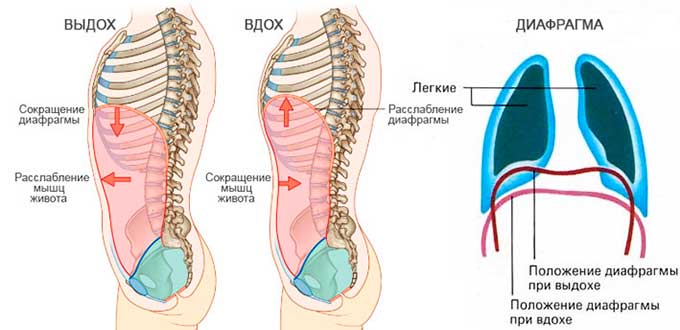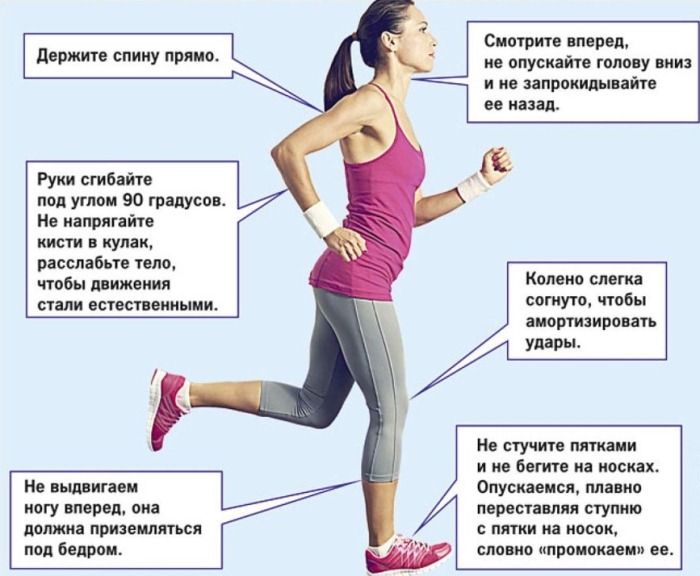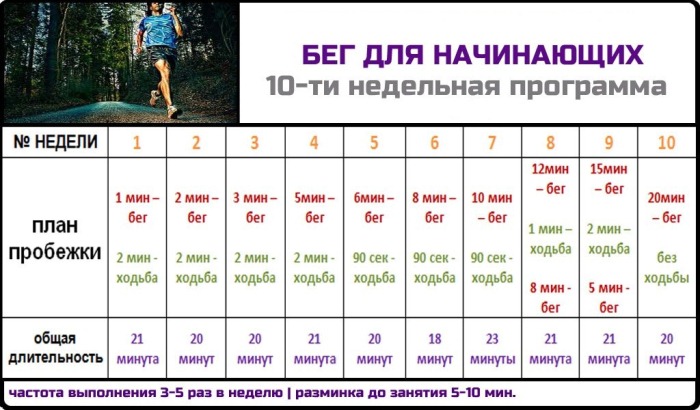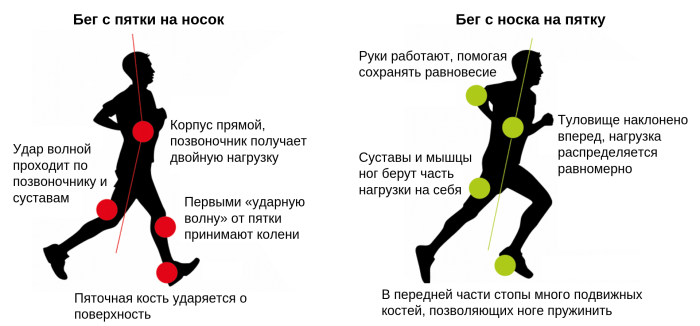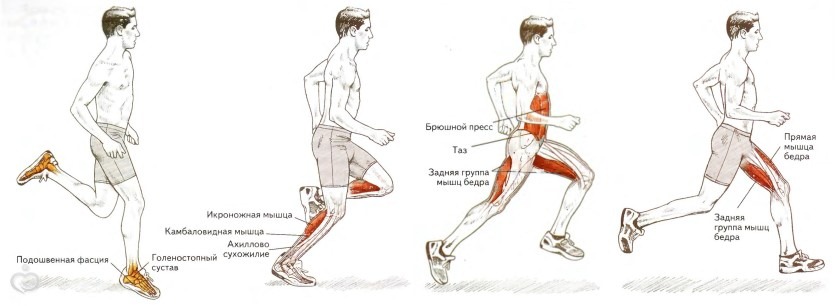Long-distance running has become widespread in recent years. It develops a commitment to a healthy lifestyle and is the best form of cardio training.
The benefits and harms of long distance running
The health and fitness of people who go in for jogging are significantly better than those who lead a static lifestyle.

The positive impact of running is expressed in the following factors:
- General improvement and strengthening of the body. Accelerated metabolism allows the body to quickly get rid of harmful waste products, saturates the blood with oxygen, energizes for a long time.
- Relief of stress and normalization of the psychological background. Helps in the fight against depression, develops willpower and good spirits. Psychologists advise disorganized and lazy people to go for daily jogging. They are lifestyle changes, daily organization and planning. Evening jogging relieves fatigue and stress after a working day.
- Improving reproductive function in women. During a long run, the blood is saturated with oxygen and supplies the internal organs with the necessary nutrients. For women who are planning a pregnancy, running is the best way to prepare for it.
- A beautiful body and muscle definition for men. In the process of running, almost all human muscles work. If this load is constant, then the muscle tissue gains mass and brings the body into a beautiful shape.
- Reduces body fat and promotes weight loss. When running long distances, not only the muscles of the legs work intensively, but also the muscles of the abdominal cavity, arms, and back. 1 hour of running can burn about 800 kcal. This result can only be achieved with a rope.
Physical activity is useful for a healthy body, but in the presence of diseases, they must be treated with caution. Before starting to play sports, it is better to consult a doctor.
Running long distances can negatively affect the body, as it increases the load on the following human organs:
- Leg joints. To use long distance running for weight loss, you need to consider body weight. If it is too high, then such physical activity can lead to premature wear and tear, as well as joint pain at the end of the workout.
- Cardiovascular system. Prolonged physical activity speeds up the contractions of the heart muscle. Untrained people and those with diseases of the cardiovascular system run the risk of shortness of breath and hypoxia.
- Chronic diseases. When running, both positive and negative processes in the body are accelerated.
The long distance is how many meters, kilometers?
A long distance is considered to be a race with a length of more than 3000 m. This distance is classic, but there are other distances, from 15 to 30 km.It is customary to call marathon races of 11 and 41 km, which are held exclusively on a road surface.
Long distance running develops endurance and is one of the disciplines of the Summer Olympics.
What makes long-distance running develop?
There is no doubt that running is the best and most effective cardio exercise. It has a positive effect on improving the functions of all human organs.
Speed, endurance, flexibility, dexterity
All of these qualities apply to people who regularly run long distances.
The initial forms of these complexes of functional properties of the human body are acquired with regular physical exertion and increase in parallel with the length of sports.
Heart, blood vessels
Despite the fact that the heart is the most trained muscle in the human body, it also needs constant training to maintain its tone. People who have a place for sports and running in their lives are less likely to develop heart attacks (strokes) and other heart diseases.
Lungs
With intense breathing, characteristic of long-distance running, the alveoli of the lungs increase, as a result of which the breathing rhythm changes. During a long run, an oxygen debt arises in the body, which is intensively compensated after the end of the run. Through this, the structure of the capillaries of the lungs develops and their work is stimulated.
Liver, intestines
During running loads, the processes of cell regeneration and renewal are triggered in the liver. During intense breathing, the walls of the diaphragm contract, which puts pressure on the liver, irritating it.
At the same time, the intestinal walls are stimulated due to its simultaneous irritation and an increase in the general body temperature. This helps to accelerate metabolism and excretion of waste products.
Metabolism, fat burning
Long-distance running develops a short-term energy deficit, which is compensated by lipolysis (the breakdown of fat). The first 30 minutes after the start of physical activity, the body gets rid of glucose stores, only then the breakdown of fats begins. Therefore, long-distance running is especially good for weight loss purposes.
Long-term running helps to accelerate metabolism, which also contributes to weight loss.
In addition to the physiological aspects, running helps to develop moral and volitional qualities, such as:
- Willpower.
- Constant motivation of yourself and the desire to stick to it.
- The ability to set goals and complete them.
- Striving for constant self-improvement.
- Overcoming difficulties and obstacles.
For best results, running long distances is best done with company. It will be better both in terms of motivating each other and also for safety reasons.
Long distance running technique
Athletes running longer distances (from 3000 m) are called stayers, hence the long-distance running itself is called stayers. It requires a high level of general physical endurance development and mastery of the basic principles of running technique from the runner.
Long-distance running includes 3 stages, which are the main elements of the technique:
| Stage name | Execution technique |
| Start and starting acceleration | At this stage, the runners start and begin the takeoff run. The highest speed occurs precisely on this segment of the starting acceleration, the length of which ranges from 60 to 80 meters. Further speed of passing the distance should be less than the starting one. Participants try to take the most comfortable positions for themselves in the leading group (for the subsequent imposition of a struggle), or save their strength and shift to the second group of pursuers. |
| Distance running | The main characteristic of this stage is an even running pace with constantly changing leaders.Athletes give each other a rest, yielding the first positions, not looking up from each other. It is extremely rare for a race participant who was in the lead after stage 1 to finish first too. The size of the stride when running ranges from 110 to 160 cm and depends on the height of the athlete. On marathon distances, stride length is reduced. |
| Finishing | The finishing stage begins approximately 40 meters before the end of the race. The leading group of athletes is accelerating, turning on about 80% of the strength reserves. At this moment, there is a restructuring and change of leaders, which is most actively manifested in the last 50 m distance. It is on this segment that all athletes switch to the finishing reinforcement, which is called spurt. |
Preparing for a long run
Long distance running consists of 4 training methods. Such training gradually develops the speed-strength qualities of an athlete, necessary for running at a distance of over 3000 m. The load is distributed over time intervals (days, weeks), which allows you to prepare for the race without overloading.
- Distance training. They are the largest stage of preparation (up to 70% of the entire load) and comes down to running with the maximum contraction of the heart muscle (up to 80% of its limit) in a limited period of time (from 30 to 50 minutes).
- Threshold training. They consist in the regular repetition of a distance of 50-1500 m with short breaks (up to 1 min) and maximum loads on the heart muscle (up to 80%). At this stage, anaerobic metabolism is trained (exercise tolerance with oxygen debt). The goal of this stage is to delay as much as possible the onset of the anaerobic threshold.
- Interval training. The athlete moves along the distance at a certain pace and in limited time or distance sections, begins to accelerate. After passing this section (or after the acceleration time has elapsed), the previous pace resumes.
- Speed training. The distance used for this stage is divided into segments of about 400-500 m. The athlete is faced with the task of running each segment faster by a few seconds than during the full distance race. At this stage, speed strength endurance is being trained.
Correct leg position
The way you place your feet when running long distances has been controversial and debated. There is no consensus on this matter.
It is customary to distinguish between 3 options for setting the legs upon landing:
- Toe (This running technique is called heel-to-toe). When in contact with the ground, the athlete's foot drops to the metatarsus or ball of the foot.
- On the heel (the technique was named "off the toe"). The runner's foot lands on the heel.
- On the foot. A less common method is when the athlete's foot completely touches the ground with its entire plane.
None of the methods can be called a technique as such, since it implies a complex of monotonous cyclical biomechanical movements. The athlete, depending on his anthropometric indicators, individually selects the style of contact of the foot with the ground.
Correct torso position, arm movement
Long-distance running involves minimal body movement while running. The back is in a straight position, but tilted forward at an angle of 5-7 °. This is necessary to give the body the momentum to move forward and maintain speed with less effort.
During the passage of the distance, it is necessary to limit the movement of the head in order to concentrate. Turning and throwing the head back should be avoided. Most professional athletes have developed peripheral vision, which allows them not to be distracted by stimuli.
Long-distance running develops not only the muscles of the legs, the arms are also actively involved during training. For effective use of the arms, they need to be bent at the elbow and moved parallel to the body, with the elbow outward.With the right technique, the arms accelerate by increasing the cadence.
Breathing technique
When running long distances, it is important to breathe deeply to fully engage your diaphragm. The breathing rhythm should be monotonous and not confused.
Optimally use the stomach: on inhalation, it should protrude forward, on exhalation, return to its original position. Exhalation (possible through the mouth) should be shorter than inhalation. The most suitable breathing pattern for a long run: 2 steps - inhale, 4 steps - exhale completely.
Psychological attitude
On the eve of an important long-distance race, it is better to protect yourself from possible stressful situations, to devote time to moral and psychological preparation.
It is important to follow 4 postulates that psychologists attribute to running:
- Running is equated to a psychologist session.
- Running is a source of joy.
- Running helps communication.
- Running builds confidence.
Major mistakes
Ignoring the elementary rules and techniques of long-distance running leads to a decrease in performance and leaving the leading position.
The main mistakes (excluding improper selection of equipment and shoes) are:
- The extended segment of the starting acceleration.
- Too fast acceleration.
- Troubled, irregular breathing or breathing incompletely.
- Incorrect positioning of the body, deflection in the lower back or strong forward tilt of the body.
- Improper arm amplitude or angle.
- Too wide stride while covering distance.
Heavy physical activity on the eve of a race negatively affects the result. Therefore, the majority of athletes, on the eve of the competition, arrange a "day of silence" in order to fully relax.
How often can you run long distances?
With good training of the body, there are no restrictions on distance and frequency. Beginners and amateurs are advised to increase the distance gradually, allowing the body to get used to the increasing load.
Long-distance running helps the body initiate self-cleansing function. It develops the process of autophagy (removal of dysfunctional components), in which blood cells begin to excrete unnecessary material that can harm the body.
These can be dead parts of the membrane, viruses and bacteria, parts of non-decayed proteins. All unnecessary material, when exposed to physical activity, is burned, turning into the necessary energy.
Basic Running Videos for Beginners
How to run correctly:


